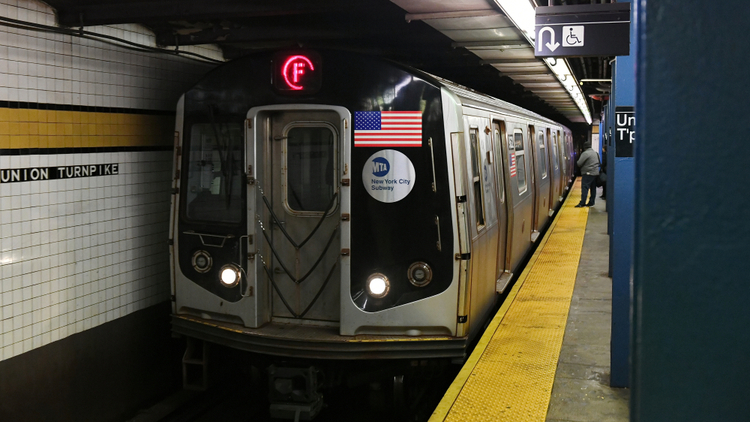Lawyer is a $1M 'genius' finalist for his plan to add cars to NYC subway lines

A subway train pulls into the Union Turnpike station in Kew Gardens, New York. 1000 Words / Shutterstock.com
A New York lawyer who proposed adding cars to subway trains is among 19 finalists in a Metropolitan Transportation Authority “genius challenge” that will award $1 million for the best ideas to fix the city’s subway system.
Lawyer Craig Avedisian, a solo practitioner, is one of two individuals named last month as semifinalists; the others are mostly large companies, the New York Times reports.
Avedisian is keeping his idea under wraps during the final judging, but the New York City transit agency said his idea involves adding up to four cars to trains currently in operation to increase train capacity and passenger comfort.
The longer trains would stop at every platform, but at some stations the last doors would not open, and at other stations the front doors would not open, according to the New York Times explanation. Doors in the middle cars would open at every stop.
Avedisian told the New York Times he had submitted more than one idea, and the one that is a finalist was less creative, though it is “more beneficial and more practical.”
The challenge has three categories. Avedisian is a finalist in a category called “Rapidly Deploy Modernized Subway Cars to the Subway System.” According to an FAQ page, the MTA will award up to $1 million to the successful applicant in each category. The money could also be distributed among several applicants in a category.
Avedisian said his idea is flexible because it can be adjusted by ridership. Nor does it involve spending money to build new tunnels or stations, or to lay new tracks, he said.
Avedisian has a transportation background. Before law school, he obtained a commercial pilot’s license, managed a branch of a courier company, worked at a consulting firm handling transportation issues, and worked at a trucking firm.
He attended law school at Boston University and drafted opinions for administrative law judges at the National Transportation Safety Board as a volunteer law clerk. He was later hired on a paid basis because his piloting expertise helped the judges understand the facts of cases, he told the Times.
The other individual finalist is Robert James, who proposes combining two technologies to keep tabs on train locations.



